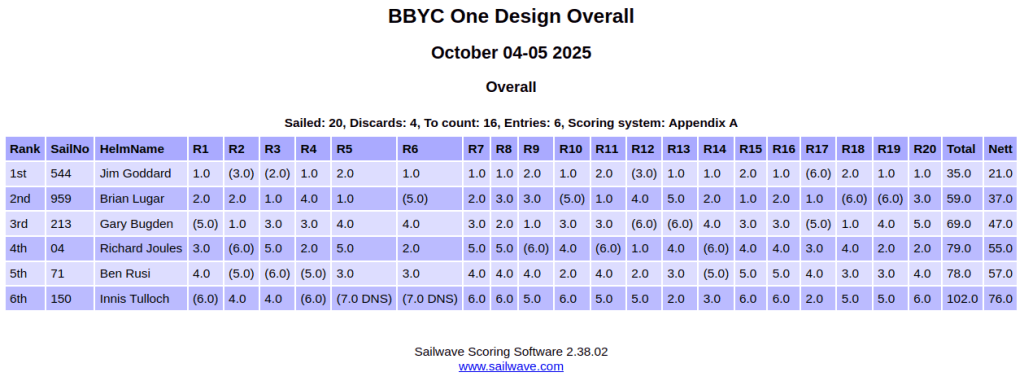









After two days of racing a new champion has emerged! Congratulations to Brian Lugar on his first club championship.
The pond is critically low again. We could sail if you launched carefully for a day or two, but it has dropped below a useable level again.









After day one we enjoyed a wonderful lobster dinner at the BBYC prepared by the one and only Captain Cook. Can it get much better than some great Soling 1M sailing and a great dinner with friends.















